SECO/VACUUM Precision Gas Nitriding Webinar
Precision Gas Nitriding - Techniques and Practices
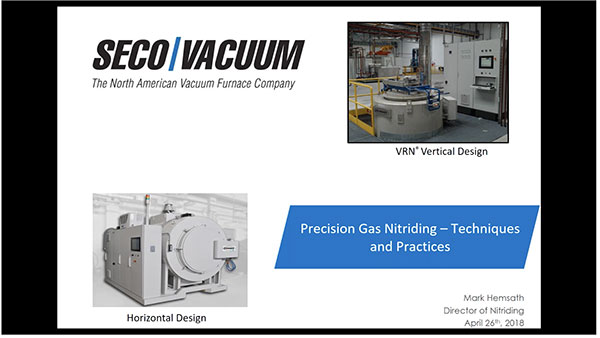
Today we're going to discuss what it takes to conduct high quality gas nitriding. We will discuss a little bit of everything: equipment, gas nitriding theory, some software tools, and metallurgy. Many of you probably don't most of this but I'm hoping that a little review will help tie things together. Our goal at SECO/VACUUM is to bring precision gas nitriding to commercial and captive heat treaters, and above all else for gas nitriding to continue its amazing, amazing growth.
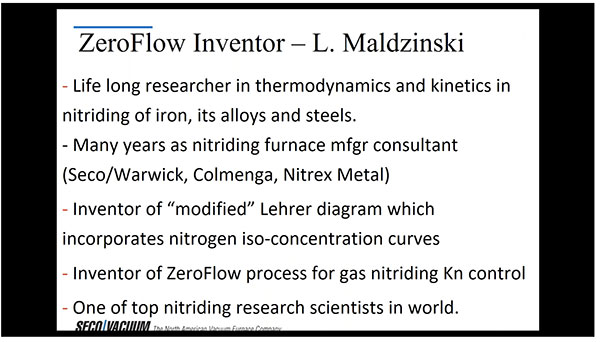
The inventor of the zero flow process is L Maldzinski. He's a lifelong researcher in thermodynamics and kinetics and the nitriding of iron. Much of the information presented today we have learned from and borrowed from L. Maldzinski. This lifelong expert on gas nitriding inventor of Zero Flow is one of the top nitriding research scientists in the world and we are very proud to have him as an inventor of the process and also as a technical consultant. And what else is that if you do at some point purchase our equipment we've always tried to give you a session after you have the equipment installed with Professor Maldzinski to allow you to learn how to use the simulation and how to become a top notch world gas Nitrider.
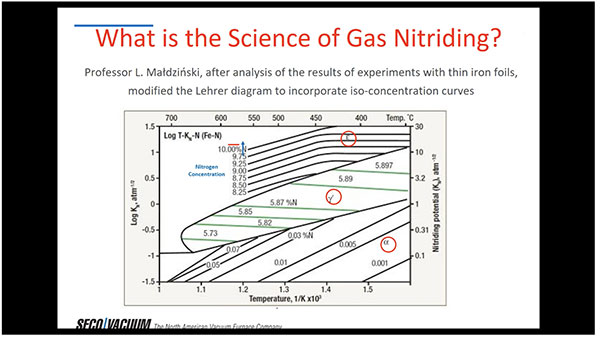
What's the science of gas nitriding? Here's a practical version of the layer diagram which was actually created by modified by Professor Maldzinski and this you probably have seen. If you're seeing the so called layer diagram it's almost always with the modifications done by Maldzinski. This shows the various levels of nitrogen in the layers, and those layers being the epsilon phase, the gamma prime phase and the alpha. The original error diagram was limited to temperature and nitriding potential. The modified diagram from Professor Maldzinski predicts the structure of the nitrated layer as mentioned, alpha, gamma prime, and epsilon; and he added the nitrogen concentration curves, which represent constant nitrogen concentration. This addition overcame a shortcoming in the original error diagram and is the basis for understanding the kinetics of the nitride layer growth which is important for precision gas nitriding.
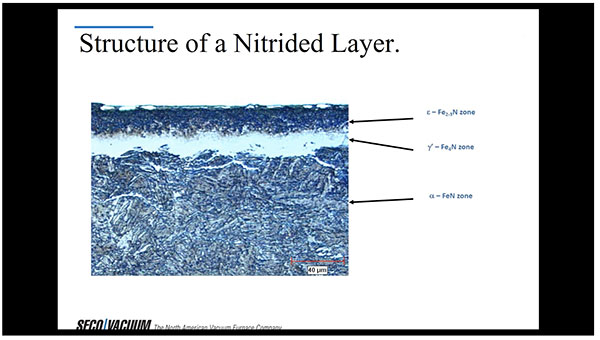
This is what the layer looks like. Many of you have seen this over and over again. But typically, the top layer known as the epsilon, is created depending upon how you nitride the gamma prime layer, which is just before the diffusion zone, and then the alpha which -- depending upon the alloys -- will have various diffusions of nitrogen. The layer diagram assumes iron.
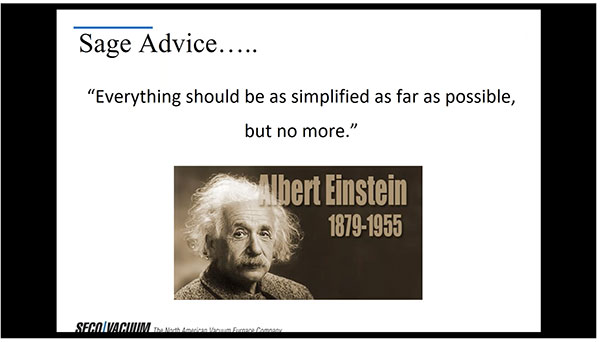
I always liked this slide. Everybody loves Albert Einstein. Everything should be as simplified as far as possible. But no more. We strive to make the complex simple. And there's so much detail on gas nitriding that I have tried to simplify what I'm talking about here and Maldzinski Zero Flow gas nitriding really takes this theory into account and tries to simplify precision gas nitriding by using potential control, and we honestly believe that it does make life simpler.
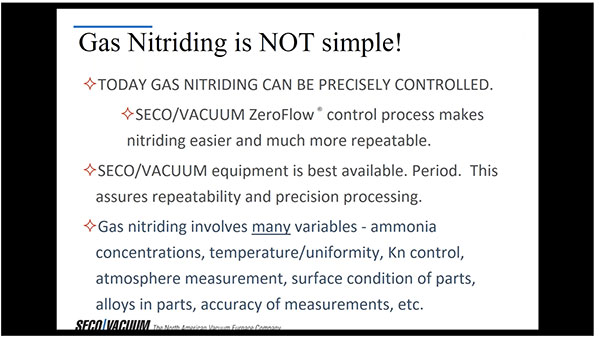
But gas nitriding is not simple. Many people have tried different things over the years, since the early 1900s. We have been learning more about gas nitriding and kinetics with a simpler process and with excellent equipment life. This does get easier, but we still must manage many, many variables. Some of the variables that we have to manage other than the equipment include ammonia concentrations, temperature, and uniformity of nitriding potential control, which is closely related to atmosphere measurement, surface condition of the parts, alloys in the parts and the actual accuracy of our measurements. And there are many more. But if we get a lot of these right, we can do a really good job with nitriding.
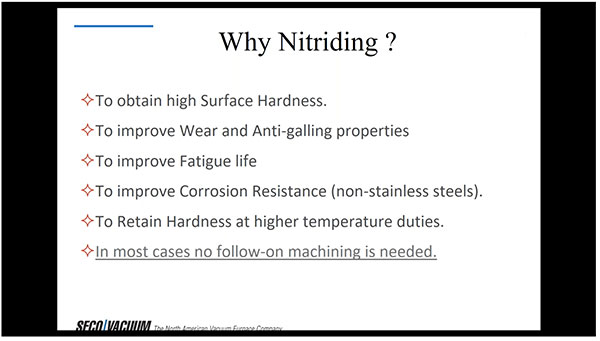
Why do we do nitriding? Let's review that. The main thing that I always like to talk about is that it's a very low process distortion at lower temps. And this is one of the reasons gas nitriding has grown so much. We do obtain a high surface hardness and we also get improved wear and anti-galling properties. We can improve the fatigue life we get if you have the white layer. You get significant corrosion resistance and you're able to retain the hardness at higher temperatures typically than some other processes might allow. In most cases, there's no follow-on machining needed. And we can usually predict any growth which is usually not a distortion-based growth but the minor growth that we do get with nitriding can usually be predicted and can be calculated into the engineering part that we are manufacturing.
To continue and view the full audio/visual presentation in its entirety, register here: https://register.gotowebinar.com/recording/8740492209039333133




